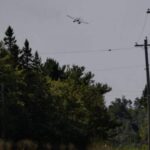In a significant boost to energy literacy across Central Alberta, twelve schools have been awarded specialized grants aimed at enhancing energy education programs through the Inside Education Energy Education Grant program. The initiative, which distributed over $100,000 province-wide, has positioned local schools at the forefront of innovative energy curriculum development.
The competitive grant program attracted applications from across Alberta, with Central Alberta schools demonstrating exceptional creativity in their proposals. Red Deer’s St. Thomas Aquinas Middle School secured funding for their “Energy Conservation Challenge,” which will engage students in measuring and reducing their school’s energy consumption through practical, hands-on activities.
“These grants create meaningful learning opportunities that connect classroom concepts to real-world energy systems,” explained Steve McIsaac, Executive Director of Inside Education. “When students understand the complexity of energy production, distribution, and conservation, they develop critical thinking skills essential for navigating Alberta’s evolving energy landscape.”
Among the regional recipients, Lacombe Composite High School stands out for their interdisciplinary project that will examine the environmental and economic impacts of various energy sources. Their initiative will culminate in a community energy fair where students will showcase sustainable energy solutions applicable to Central Alberta’s unique geographic and economic context.
The grants, ranging from $2,500 to $5,000 per school, will fund specialized equipment, field experiences, and expert presentations that would otherwise be beyond typical school budgets. At Innisfail Middle School, the funding will support the construction of working solar and wind energy models, allowing students to conduct comparative efficiency studies across different weather conditions common to Central Alberta.
“What makes these projects exceptional is their integration across multiple subject areas,” noted Laura Delaney, an education coordinator with Inside Education. “Students aren’t just learning about energy in science class—they’re calculating efficiencies in math, debating energy policies in social studies, and communicating findings through language arts.”
The timing of these grants coincides with Alberta’s renewed focus on energy literacy within the provincial curriculum. Educational experts suggest that students with comprehensive energy knowledge will be better positioned for careers in Alberta’s evolving energy sector, which continues to diversify beyond traditional oil and gas into renewable technologies.
Sylvan Lake’s H.J. Cody School plans to use their grant to establish an “Energy Innovation Lab” where students will design and test energy conservation technologies specific to residential and commercial applications in smaller urban centers. Their project emphasizes the potential for energy innovation to drive economic development in Central Alberta communities.
The impact of these grants extends beyond the classroom. Schools receiving funding have committed to community engagement components, ensuring that student learning benefits the broader public. Stettler Elementary will host community energy conservation workshops led by students, while Blackfalds’ Iron Ridge Elementary Campus will create an energy resource guide tailored to local households.
Inside Education’s grant program represents a collaboration between industry, government, and educational institutions, reflecting the complex stakeholder relationships that characterize Alberta’s energy sector. The program aims to foster balanced, evidence-based energy literacy that acknowledges both the province’s resource heritage and its transition toward more diverse energy systems.
As these Central Alberta schools implement their innovative programs throughout the upcoming school year, one question remains at the forefront: How might these educational initiatives shape the next generation’s approach to balancing energy development with environmental stewardship in a province where both have defined its past and will determine its future?
For more information on educational initiatives across the province, visit our Canada News section.
























